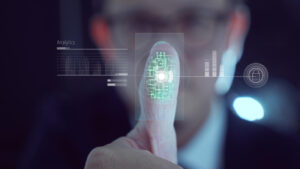In today’s interconnected world, where the Internet of Things (IoT) has become ubiquitous, ensuring the security of connected devices is paramount observed by Bahaa Abdul Hadi. The convergence of biometric fusion and IoT presents a promising solution to enhance the security landscape.
Biometric fusion refers to the integration of multiple biometric modalities for more robust authentication, while IoT encompasses a network of interconnected devices sharing data seamlessly. This blog explores the synergy between biometric fusion and IoT, elucidating how this integration can bolster security measures and mitigate risks associated with connected devices.
Understanding Biometric Fusion
Biometric authentication relies on unique biological traits such as fingerprints, iris patterns, and facial features to verify the identity of individuals. Biometric fusion takes this concept a step further by combining multiple biometric modalities, enhancing accuracy and reliability. Unlike traditional authentication methods like passwords or PINs, biometric fusion offers a more secure and user-friendly approach to identity verification.
Integration of IoT and Biometric Fusion
The integration of biometric fusion with IoT introduces new possibilities for enhancing security in interconnected devices. IoT devices equipped with biometric sensors can authenticate users based on their unique physiological traits, adding an extra layer of protection beyond conventional authentication methods.
For instance, smart locks can use facial recognition or fingerprint scans to grant access to authorized individuals, mitigating the risk of unauthorized entry. However, integrating biometrics with IoT poses certain challenges, including interoperability issues, scalability concerns, and the need for robust encryption protocols to safeguard biometric data transmission.
Enhancing Security with Biometric Fusion and IoT
One of the primary benefits of combining biometric fusion and IoT is the heightened security it offers. By leveraging biometric data for authentication, organizations can strengthen access control mechanisms and mitigate the risk of unauthorized access.
Additionally, biometric fusion enhances data protection by reducing the reliance on easily compromised credentials like passwords or PINs. This not only enhances security but also enhances user experience by eliminating the need to remember complex passwords. Furthermore, biometric authentication can help prevent identity theft and fraud, as biometric traits are inherently unique to each individual.
Future Implications and Considerations
Looking ahead, the integration of biometric fusion and IoT is poised to revolutionize the security landscape. However, it also raises important ethical and privacy considerations. As biometric data becomes increasingly ubiquitous, it is essential to establish robust privacy policies and regulatory frameworks to safeguard individuals’ rights and mitigate the risk of misuse. Plus, ongoing research and development are needed to address emerging security threats and vulnerabilities associated with biometric authentication and IoT devices.
Conclusion
In conclusion, the convergence of biometric fusion and IoT holds immense potential for enhancing connected device security. By leveraging the unique biological traits of individuals, biometric fusion provides a more robust and user-friendly authentication mechanism compared to traditional methods. When integrated with IoT, biometric authentication can bolster security measures, protect sensitive data, and mitigate the risk of unauthorized access.
However, organizations must approach the adoption of these technologies responsibly, addressing ethical, privacy, and regulatory considerations to ensure a secure and trustworthy connected ecosystem.
The article has been written by Bahaa Abdul Hadi and has been published by the editorial board of www.identityherald.com




